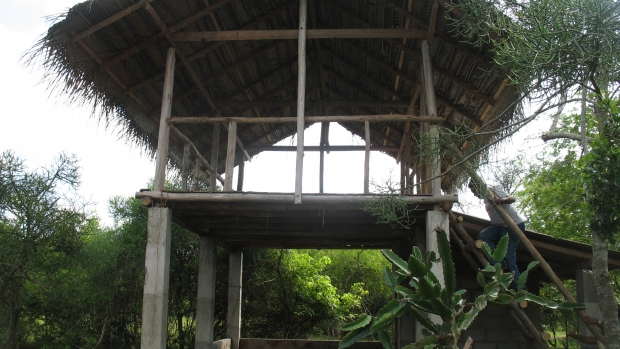Grants :: Small Grant Facilities :: Developing ecotourism as an alternative to environmentally harmful activities
Developing ecotourism as an alternative to environmentally harmful activities

Camping unit, Sri Lanka © KEkaratne , 2009
Objectives
The objective of this project was to encourage communities living in biodiversity-rich areas such as Lunama, Kalametiya and Ussangoda to protect their environment and improve their economic resilience.
Background
The area of Rekawa, Ussangoda and Kalametiya (RUK) lies on Sri Lanka’s south-east coast in the district of Hambantota. The coastal ecosystems in this area are rich in biodiversity but face increasing pressure from human activities. Rekawa is a turtle sanctuary, while the Ussangoda plateau is a designated archaeological site. The interconnected Kalametiya and Lunama lagoons and their environs support a diverse range of bird species.
The major threats to these ecosystems include illegal fishing practices such as dynamiting, clearing of mangroves, unregulated livestock farming, turtle egg collection, wildlife poaching, coral mining and inland shell mining. The ecosystems are also threatened by the spread of invasive plants such as mesquite (Prosopis juliflora), prickly pear cactus (Opuntia dillenii) and lantana (Lantana camara), and fauna such as feral dogs and giant African land snails (Achatina fulica).
Ruk Diya Eco Holidays is a community-based organization supporting ecotourism activities in the RUK area. It is managed by a group of local youth who used to be involved in harmful activities such as poaching, collecting turtle eggs, and coral and inland shell mining. The organization, which runs a guesthouse called Ruk Diya Eco Stop, secured a grant from MFF to expand its activities in the area surrounding Lunama lagoon.
Target beneficiaries
Villagers in the RUK area involved in environmentally damaging livelihood practices.
Outputs
- Establishment of two campsites with accommodation for 16 people.
- Establishment of a birdwatching centre, boat service facilities and educational facilities for schools and researchers.
- Production of a leaflet and posters to promote the campsites.
Accomplishments and challenges
The project identified local people involved in harmful livelihood practices (the target group) and successfully motivated them to join project activities. Programmes were conducted to raise their awareness of the environmental importance of the RUK area.
Two sets of well-appointed camping units were installed, each consisting of a two-storey wooden shelter housing four canvas tents, a toilet, camp beds and basic camping furniture. Eco Stop earns a monthly income of US$260 from renting out the units and giving visitors home-cooked meals.
To service the camping facility, Ruk Diya Eco Stop has employed some members of the target group, diverting them from harmful practices.
The additional income coming to the community has added value to the RUK area. Community members have become more aware of their environment and more supportive of environmental conservation efforts. Protection of the mangroves has improved and increased numbers of students are visiting the area.
Contributions to cross-cutting themes
Communications
A leaflet and posters were produced to publicise the new campsites.
Lessons Learned
By identifying the people harming the environment of the RUK area, making them more aware of its importance, and providing employment for some of them, the threats to this unique ecosystem are likely to diminish.
It is important to increase awareness of the importance of mangroves and the environment. Schoolchildren in particular need to be taught about the value of the environment.
Project Facts
Country
Location
Rekawa, Ussangoda and Kalametiya (RUK) area, Sri Lanka
Topic
Duration
1st Jan 2009 to 31st Dec 2009
MFF Grant Amount
US$4,474
Implementing Partner
Ruk Diya Community Based Organization
Ruk Diya Eco Stop, Kiula Lunama,
Ambalantota, Sri Lanka
Tel: +94 47 5672566
